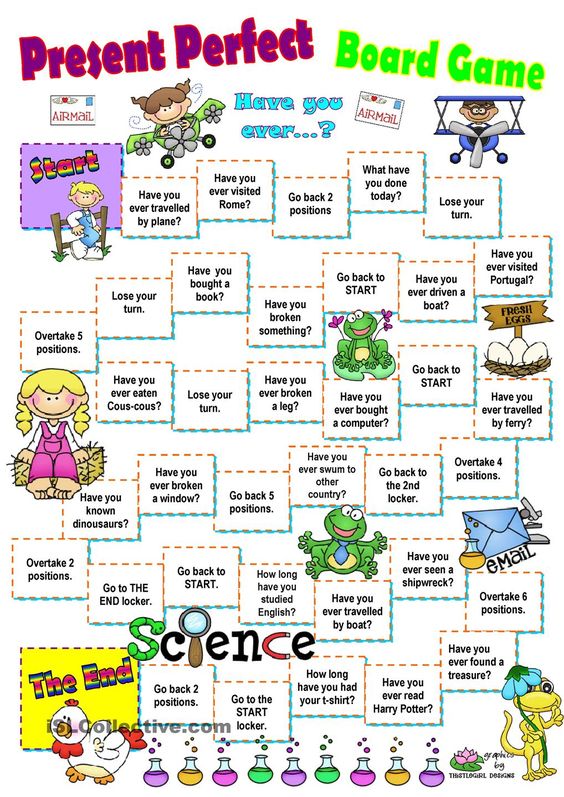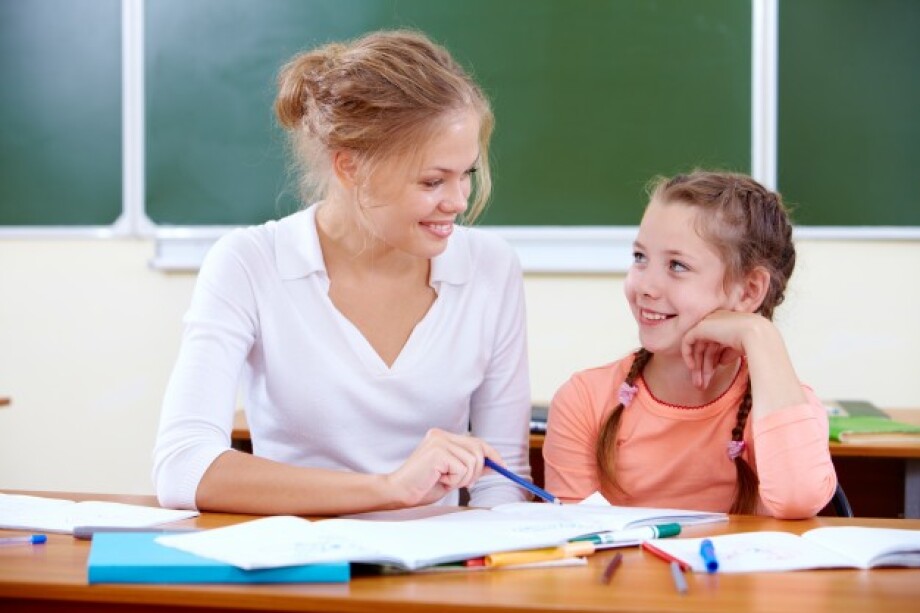Teaching English tenses in primary school requires great efforts and lots of practice. While Present and Past Simple Tenses may seem not too hard for the kids, learning Present Perfect does take plenty of time. Hence, if you work with kids, you should pay more attention to teaching this tense and make it entertaining. Fun is the way to remembering things.
Present Perfect introduction
First of all, provide some examples with the Present Perfect Tense.
— I have done my homework.
— Tom has gone to France.
Elicit the form of Present Perfect.
Have + Verb3
He, she, it — has + Verb3
Give examples with Present Perfect and Past Simple to make a distinction between finished actions.
— I did my homework yesterday.
— I have done my homework.
Ask students: “Is the specific time of the action mentioned in the first or in the second example?”
Elicit that we use Past Simple when we know exactly when the action happened in the past, and we use Present Perfect when we talk about past experiences in general.
Tell your kids the key words indicating Present Perfect, such as ever, never, just, already, yet, etc.
Fun activities to practise Present Perfect
What have we changed in the classroom?
Divide your class into two groups. The first group leaves the classroom, while the second group is given 3 minutes to change the places of the objects in the room. Then the first group must try to say what the second group has changed in the classroom using Present Perfect (e.g. You have changed the textbook. You have put it on my desk. You have closed the window. You have opened the curtain).
“Yes, I have”
Students work in pairs and ask each other questions with “Have you ever…” to fill in the table (for example, about travelling). The answer should be “Yes, I have”. Then kids ask questions with WH using Past Simple (about last trip). This will help them to understand the difference between Present Perfect and Past Simple.
Who has been a good child?
This activity will especially work nicely to play at Christmas and New Year. In this game, kids work in pairs, one of them playing Santa’s role. Santa then asks questions with “Have you” to find out whether the student has been a good kid this year (Have you helped your mother? Have you done your homework? Have you cooked dinner?).
Board games
A board game can serve a perfect and effective tool to practise Present Perfect with your kids. They can play it in pairs or in groups (not more than 4 people in each group). Here kids roll a die or flip a coin to take steps. If you work online, you can use this tool. Every time students take turns, they answer questions with Present Perfect or do the instructions on the board game. There are plenty of printable board games on Pinterest and Islcollective.

Big dreams
Do your kids have big dreams? Is there anything they have never done? Ask them to share with a partner three things they have never done (they haven’t done yet), but they would like to do. Thus they revise the adverbs never and yet and have the practice with Present Perfect.
I have lied
Many teachers use a version of this activity “Two truths and one lie” as a warm-up. It can also be adapted to your needs and used to improve your kids’ knowledge in Present Perfect. Here students work in pairs and tell 3 sentences to their partners (two true sentences and one false sentence) with “I have” (I have been to Paris, I have never gone to a theatre, I have not done my homework). Then partners ask them questions to find out whether it is true or false. They finish the game with “You have lied” or “I have lied”.
Apply the activities mentioned in the article to make your grammar classes engaging and help your students to practise Present Perfect with great motivation.






 Маргарита Аветисян
Маргарита Аветисян 



